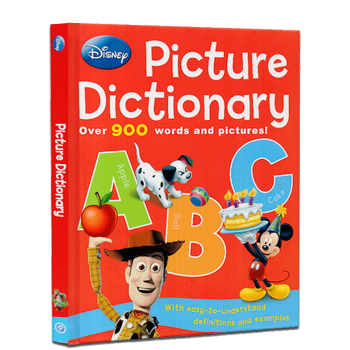![Raising a Bilingual Child [平装]](https://pic.tinynews.org/19352423/rBEhU1JbhGYIAAAAAABYZ445AWIAAEG8QLq-GkAAFh_379.jpg)

具体描述
内容简介
If you would like your children to experience the benefits of becoming bilingual, but you aren’t sure how to teach them a second language, then Raising a Bilingual Child is the perfect step-by-step guide for you.Raising a Bilingual Child provides parents with information, encouragement, and practical advice for creating a positive bilingual environment. It offers both an overview of why parents should raise their children to speak more than one language and detailed steps parents can take to integrate two languages into their child’s daily routine.
Raising a Bilingual Child also includes inspirational first-hand accounts from parents. It dispels the myth that bilingualism may hinder a child’s academic performance and explains that learning languages at a young age can actually enhance a child’s overall intellectual development.
作者简介
Barbara Zurer Pearson, Ph.D. is a Research Associate in Linguistics and an Adjunct Professor in the Department of Communication Disorders at the University of Massachusetts Amherst. Her Ph.D. in Applied Linguistics is fromthe University of Miami. She has over twenty years of research experience in the fields of language acquisition and bilingualism and did ground-breaking work on bilingual acquisition and assessment with her research group at the
University of Miami. Those studies of bilingual infants and children have been published in the book Language and Literacy in Bilingual Children. Most recently, Barbara Zurer Pearson worked on the Diagnostic Evaluation of Language Variation (DELV), a project to develop an innovative language assessment for children funded by the National Institutes of Health.
精彩书评
“A timely and well-written book! … [It] helps parents prepare their children for the future….”--J. Kevin Nugent, Ph.D. Director, The Brazelton Institute, Children's Hospital Boston and Harvard University; Professor, Child and Family Studies, University of Massachusetts Amherst
“This book is sure to become a classic! … Parents should appreciate this important book. Pearson … inspire[s] all of us to celebrate the richness of linguistic diversity in our lives.”
--Kenji Hakuta, Ph.D. Lee L. Jacks Professor of Education, Stanford University, Author of Mirror of Language: The Debate on Bilingualism
“This is a book that inspires confidence that the choice of bilingualism is a good one for parents, for children, and for our society.”
--Donna Christian, Ph.D. President, Center for Applied Linguistics, Washington D.C.
“Pearson has used her keen insights about the issues that parents are concerned about to paint an in-depth and interesting-to-read handbook.”
--Fred Genesee, Ph.D. Professor of Psychology, McGill University, Co-author of Dual Language Instruction: A Handbook for Enriched Education
“Barbara Pearson' s [book] is a wonderfully written, sparkling composite of research results, personal narratives, practical advice, and wise enthusiasm for the project of bilingualism […].”
--Thomas Roeper, Ph.D. Professor of Linguistics, University of Massachusetts Amherst, Author of The Prism of Gramma
“I thoroughly agree with the author’s insights and recommendations which are both research-based and flexible and comprehensive enough to accommodate different family situations.”
--Lourdes C. Rovira, Ed.D. Associate Superintendent, Curriculum and Instructional Support, Miami-Dade County Public Schools?
“I enjoyed reading Raising a Bilingual Child and found it informative and accessible.”
--Chris Rosenberg, Principal, Starr King Elementary School, San Francisco,
用户评价
如果要用一个词来形容这本书给我的感受,那就是“实用主义的乐观主义”。在阅读过程中,我发现作者对于现实中可能出现的各种挑战——比如祖父母辈的支持不足、孩子在学校受到的单一语言环境影响、或者时间管理上的困难——都有非常务实的回应。她提供的解决方案往往不是“购买昂贵的工具书”或者“请专业家教”,而是侧重于如何利用现有资源,例如通过播客、简单的家庭对话模板,甚至是优化家庭内部的沟通规则来解决问题。这本书的实用性体现在它提供的清单和可执行的步骤上,你读完一个章节,手边就能立刻列出一份改进计划。这本手册更像是一个陪跑的伙伴,它告诉我,即使我们不是双语家庭的原生环境,通过持续的、有策略的努力,我们依然能为孩子搭建起一座坚实的双语桥梁,这是一种非常积极且鼓舞人心的力量。
评分拿到这本书后,我首先被它行文的流畅度和亲切感所打动。读起来完全没有那种学术著作的枯燥感,更像是邻家一位经验丰富的妈妈在跟你分享她的心得体会。作者的叙事方式非常自然,常常会穿插一些她自己教养孩子的真实案例,那些小小的挫折和最终的突破,读来让人深有共鸣。比如,她描述孩子在公共场合拒绝说其中一种语言时的尴尬,那种处理方式简直是教科书级别的温柔而坚定,我马上就在脑海里预演了下次遇到类似情况该如何应对。这本书的优点在于它承认了“没有完美的解决方案”,而是鼓励父母根据自己家庭的独特背景和孩子的性格去灵活调整策略,这一点非常人性化。它没有给我施加过大的压力,反而让我感到放松,仿佛有人在告诉我:“你做得已经很棒了,我们一起来看看如何能做得更好。”这种鼓励性的基调,对于常常在育儿路上自我怀疑的父母来说,无疑是一剂强心针。
评分我最近一直在研究关于大脑可塑性和第二语言习得的神经科学理论,希望能找到一些硬核的支撑来指导我的实践。这本书的理论基础部分处理得相当巧妙。它没有用那些晦涩难懂的术语来吓退普通读者,而是用非常直观的比喻和图表,将复杂的语言习得机制讲解得通俗易懂。例如,它解释了“关键期”的概念时,引用了一个关于“语言岛屿”的生动例子,让我一下子就明白了为什么早期干预如此重要,同时也明白了为什么成年后学习语言会更吃力。更值得称赞的是,它将这些科学发现与日常的亲子互动场景紧密结合起来,比如如何设计游戏、选择读物,来最大化地激活孩子的语言潜能。这本书的深度和广度令人印象深刻,它既能满足我这个想了解“为什么”的探究型读者的需求,也能为那些只想要“怎么做”的实干型父母提供清晰的路线图。
评分这本书的封面设计真是让人眼前一亮,那种充满活力的蓝色调,加上一个温馨的家庭剪影,一下子就抓住了我的眼球。我通常对育儿类的书籍不太感冒,觉得很多都是空洞的说教,但这本书的排版和插图风格却非常清新,让人忍不住想翻开看看。从目录上看,它似乎涵盖了从早期语言接触到青少年时期的多个关键阶段,这比我之前看过的几本书要系统得多。我特别留意了关于“平衡输入”的那一章的标题,这正是我目前最头疼的问题——如何确保孩子在两种语言中都能获得足够的、高质量的刺激。而且,作者似乎非常注重实操性,很多章节标题都带有“技巧”、“策略”这样的词汇,这让我对书中的具体建议充满了期待。这本书的装帧手感也很好,纸张厚实,拿在手里有一种沉甸甸的踏实感,感觉作者是真正用心去打磨这部作品的。我已经迫不及待想深入阅读其中的内容了,希望能从中找到一些能立即应用到日常生活中的有效方法,而不是那些理论大于实践的空泛之谈。
评分这本书的章节组织结构简直是为我量身定做的。我最欣赏的是它对“文化融入”这个主题的探讨,这往往是许多语言学习书籍会忽略的薄弱环节。作者非常强调,语言不仅仅是词汇和语法,更是连接家庭、社区和身份认同的桥梁。她分享了如何通过食物、节日庆典甚至家庭传统来自然地将第二语言植入孩子的生活,而不是把它变成一项额外的“学习任务”。这种全方位的浸入式体验的建议,对我启发特别大。我过去总是在纠结于每天要花多少分钟进行“正式教学”,现在我明白了,关键在于创造多少“有意义的交流场景”。这本书成功地将“养育”与“教育”这两个概念完美地融合在一起,让我重新审视了自己作为语言输入者的角色定位——我不再是老师,而是引导者和文化的传承者。
评分好书。。。。。。。。
评分还不错吧,应该是正版图书来的,送货比较迅速
评分还不错吧,应该是正版图书来的,送货比较迅速
评分好书。。。。。。。。
评分好书。。。。。。。。
评分还不错吧,应该是正版图书来的,送货比较迅速
评分还不错吧,应该是正版图书来的,送货比较迅速
评分好书。。。。。。。。
评分还不错吧,应该是正版图书来的,送货比较迅速
相关图书
本站所有内容均为互联网搜索引擎提供的公开搜索信息,本站不存储任何数据与内容,任何内容与数据均与本站无关,如有需要请联系相关搜索引擎包括但不限于百度,google,bing,sogou 等
© 2025 book.tinynews.org All Rights Reserved. 静思书屋 版权所有

![Batman: Under the Red Hood 英文原版 [平装] pdf epub mobi 电子书 下载](https://pic.tinynews.org/19352697/rBEhWlJbZv4IAAAAAABTAKS9AI4AAEG2gFFG6YAAFMY881.jpg)
![The Iron Man[钢铁侠] [平装] pdf epub mobi 电子书 下载](https://pic.tinynews.org/19462937/rBEhV1K5PXIIAAAAAAEIkvWCp1oAAHS1wMrssUAAQiq904.jpg)
![Fancy Nancy: Just My Luck! 漂亮南希:好运气 [平装] [4-8岁] pdf epub mobi 电子书 下载](https://pic.tinynews.org/19473022/53e067ddNdd40d1c5.jpg)
![Pinkalicious: The Royal Tea Party [平装] [4-8岁] pdf epub mobi 电子书 下载](https://pic.tinynews.org/19473285/53abd997Nefd69a95.jpg)
![Las fresas son rojas [盒装] [2-5岁] pdf epub mobi 电子书 下载](https://pic.tinynews.org/19543605/55c47910N26cf608e.jpg)
![Thea Stilton Mouseford Academy #2: The Missing Diary [平装] [7岁以上] pdf epub mobi 电子书 下载](https://pic.tinynews.org/19545613/5641876aN502d74ad.jpg)
![Watership Down [平装] pdf epub mobi 电子书 下载](https://pic.tinynews.org/19547146/5609064bN7639bb82.jpg)

![DK Readers L2: Wild Baby Animals [平装] [05--07] pdf epub mobi 电子书 下载](https://pic.tinynews.org/19575959/56eb56deN1f229f61.jpg)
![Someday [04--08] pdf epub mobi 电子书 下载](https://pic.tinynews.org/19641593/578342d9N0d2366a4.jpg)









